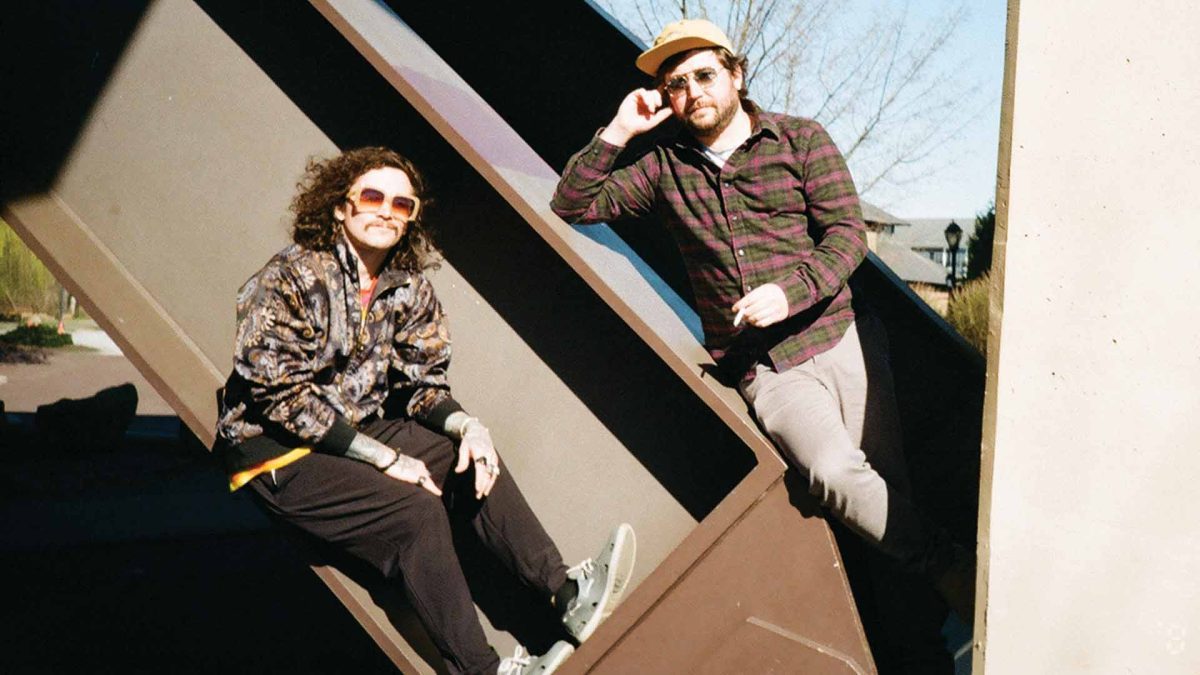by Ari Roth
Matt Andersen is a guitarist and singer who draws from a wide range of American roots music – blues, country, folk and more – to form a style that is both unique and clearly linked to the traditions in which he is immersed. Andersen has spoken before about his music-filled upbringing, and he says that music was “a big part of the culture back home,” as his grandmother, mother and cousins all played instruments, such as fiddle and piano.
Andersen is a supremely gifted guitarist, but his recordings are never flashy and always committed to the song at hand. He honed his skills growing up “playing lots of different styles” that surrounded him as a kid, and his style really began to cohere once he began playing by himself. In an effort to “make as much noise as [he] could,” he developed his signature style, “filling all the holes” in the sound by playing basslines, melodies and chords all at once in order to compensate for the lack of a full band. Discovering the blues through Eric Clapton, Andersen says that he naturally gravitated towards his predecessors, discovering B.B. King, Albert King, Roy Buchanan and Taj Mahal on the way to a more complete understanding of blues guitar. Although he says that, in learning guitar, he “never really emulated anyone a whole lot,” the mark of all of these legendary guitarists is present in his music, especially in a live setting.
Despite his increasing success as a recording artist, it is clear that the live arena is where Andersen truly thrives. He loves being on the road and maintains an intensive tour schedule throughout the year, citing a show at a Washington prison, where he played for about 200 inmates, as a particular highlight. He also expresses pride at selling out a gig in Toronto’s legendary Massey Hall, an accomplishment which few artists have managed to achieve, especially given his style of music. These two examples demonstrate Andersen’s range and commitment as a live musician, a characteristic that he says has helped him survive and thrive as a full-time professional musician in an era where the music industry has changed drastically, and in some ways become less friendly to artists who make a living with music.
In fact, Andersen sees these shifts as a positive, relishing what he sees as a return to the live venue as the dominant means of self-support for musicians. He says that, in order to succeed in today’s music industry, “you’ve gotta be out playing in front of people and building an audience that way,” a skill at which he clearly excels. He criticizes “Idol shows and The Voice where people are made popular overnight,” arguing that “if you do that then you lose your audience as quick as you gain them.” Nonetheless, he remains positive and optimistic about the current state of the music industry, observing that “people out there doing the grassroots and just playing shows and word of mouth, I think it’s actually a good scene right now, it feels like people are getting ready to get back to hearing real music again.”
Andersen’s new album, Weightless, is also his most fully-realized, diverse and assured offering, owing in part to the long list of collaborators that he worked with during the sessions. This is not the first time that Andersen has enlisted significant collaborators, and 2011’s Coal Mining Blues saw him play alongside keyboardist Garth Hudson, of the legendary Canadian-American group The Band. Weightless, however, sees him expand his list of collaborators considerably. According to Andersen, “every writer brought their own style to it, which is why I wanted to reach out and write with these people.” In particular, he cites the “story songs” that came out of writing with Dave Gunning as being a product of Gunning’s influence through collaboration. Each writer and player “brought their own little flavor into the tunes,” broadening the album’s scope and making it much more of a group effort.
Written following a long tour playing alongside a wide range of acts, Weightless sees Andersen moving away from first perspective, “I and me” songwriting towards an “outside perspective” embodied by songs such as “The Fight.” He says that this song is “all about the industries at home and what they’re doing to the nature around us, and how much that’s really starting to hurt the community,” a topic which he says he “never would have written about, or even really cared about, when [he] was in [his] early twenties.” Songs like “The Fight” represent a shift within Andersen, a widening of perspective to encompass broader themes in his songwriting.
To conclude our interview, I ask him about the importance of tradition in his music. Although he is certainly rooted in blues, he has never limited himself to a single genre or style, stating that “I appreciate people who just do the traditional thing, but I think it’s really nice to pay homage in your own way, and not get pigeonholed and not leave yourself limited, to just stick to one kind of genre.” Andersen says that it is important for him to continue on from his influences and keep adding to that lineage, concluding that “If it’s already been done, you can kinda let it go and build off of that instead of trying to do it over and over again.”
If you missed Andersen here at Tin Angel last month, check him out at Bethlehem’s Musikfest Cafe on June 8th with Los Lobos. Matt Andersen has successfully absorbed his influences while stretching their boundaries, bringing classic styles to new places. The result is timeless.







